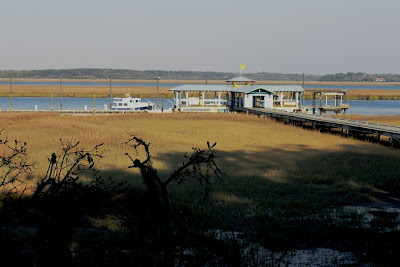Today, people started appearing at the waterfront very early, as it was the weekend and it was destined to be the warmest, sunniest day since we returned from Michigan.
We headed out for a visit to the birthplace and home of Juliette Gordon Low, founder of the Girl Scouts and one of our nation's most remarkable women. This was of special interest to Anne, who was a Girl Scout herself and the Girl Scout troop leader of Elizabeth's troop when she was young.
Juliette Gordon, also affectionately known as Daisey, was born in 1860 and developed advanced skills in writing, painting and sculpting. She married William Low, lived for a while in England, met Sir Robert Baden-Powell there (founder of the Boy Scouts in 1911), and inspired, returned to the U.S. and started the Girl Scouts here in Savannah.
The home, first built in 1818 by the mayor of Savannah, is in the Regency style. William Gordon bought it in 1831, and it was used by four generations of Gordons until the Girl Scouts purchased the house in 1953 and began restoration for use as a program center and museum.
 |
| Juliette Gordon Low House |
 |
| Gate commemorating the creation of the Girl Scouts |
 |
| Fountain at Forsyth Park |
 |
| River Street shop |
 |
| River Queen Cruises |
Later in the day, we stopped for a treat at Leopold's, which was established here in 1935, and which is currently rated in the top 10 of all ice cream parlors in the U.S. We had Rum Bisque, a totally new flavor to us, and its was as good as rum itself. Wow!
That evening we had tickets to attend a live music show, "Savannah Live," at the Savannah Theatre. This is the #1 recommended activity on TripAdvisor for Savannah. It is locally owned and produced, and combines a broad cross section of blues, Broadway, jazz, and rock. We sang along, clapped, and greatly appreciated the level of talent of all the performers.















































